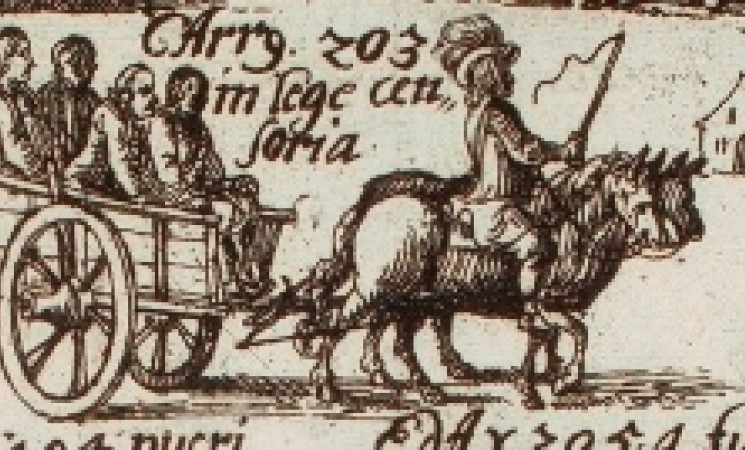Learning the Law: Visual Aids

A selection of works which use various visual devices (charts, illustrations, diagrams…) to present information in interesting ways
Giovanni d’Andrea. Lecture super arboribus consanguineitatis et affinitatis. Vienna: Hieronymus Vietor and Johann Singriener, 1513.

These diagrams are visual hypotheticals, presenting the student with tough legal issues involving blood relationships. Despite its relatively small size, the wide margins left enough space for a student to attempt a solution of his own.

This 15th century manuscript contains a number of related works, includes these hand-drawn and colored copies of Giovanni D’Andrea’s trees of consanguinity and affinity. Tree diagrams were a popular way to convey information about family relations in a compact, easy-to-understand way. These diagrams illustrate in just two pages what would otherwise take many pages of text to explain. They continued to be used in the era of printing - a print version of the tree on the left was the first image to appear in a printed law book.

This is a student’s notebook from a lecture at the first law school in the United States, Litchfield Law school, which opened its doors in 1773. On the left is the end of a chronological chart of different case reporters, allowing the student to quickly and easily locate a case. On the right, the notes begin with a section on municipal law.

This confusing chart is actually designed to make it easier for students to memorize the Institutes of Justinian. It reduces the mass of information presented in the Institutes to a series of allegorical engravings keyed to passages in the text, to aid in memorization. Can you work out the meaning behind any of the images?
Giles Jacob. Tables to the Law. London: Printed by E. and R. Nutt and R. Gossling …, 1736.

This table, part of a series printed by Giles Jacob, outlines the definitions and punishments for a host of common crimes against God, the king, and the public. The large format allows it to present a variety of information in a way that is accessible and easy to display.
–Ryan R. Martins, Rare Book Fellow
“Learning the Law: The Book in Early Legal Education” is on display October 1 to December 14, 2018, in the Rare Book Exhibition Gallery of the Lillian Goldman Law Library, located on Level L2 of the Yale Law School (127 Wall Street, New Haven CT). The exhibition is open to the general public 10am-6pm daily, and open to Yale affiliates until 10pm.
A full catalogue of the exhibit can be found here.


